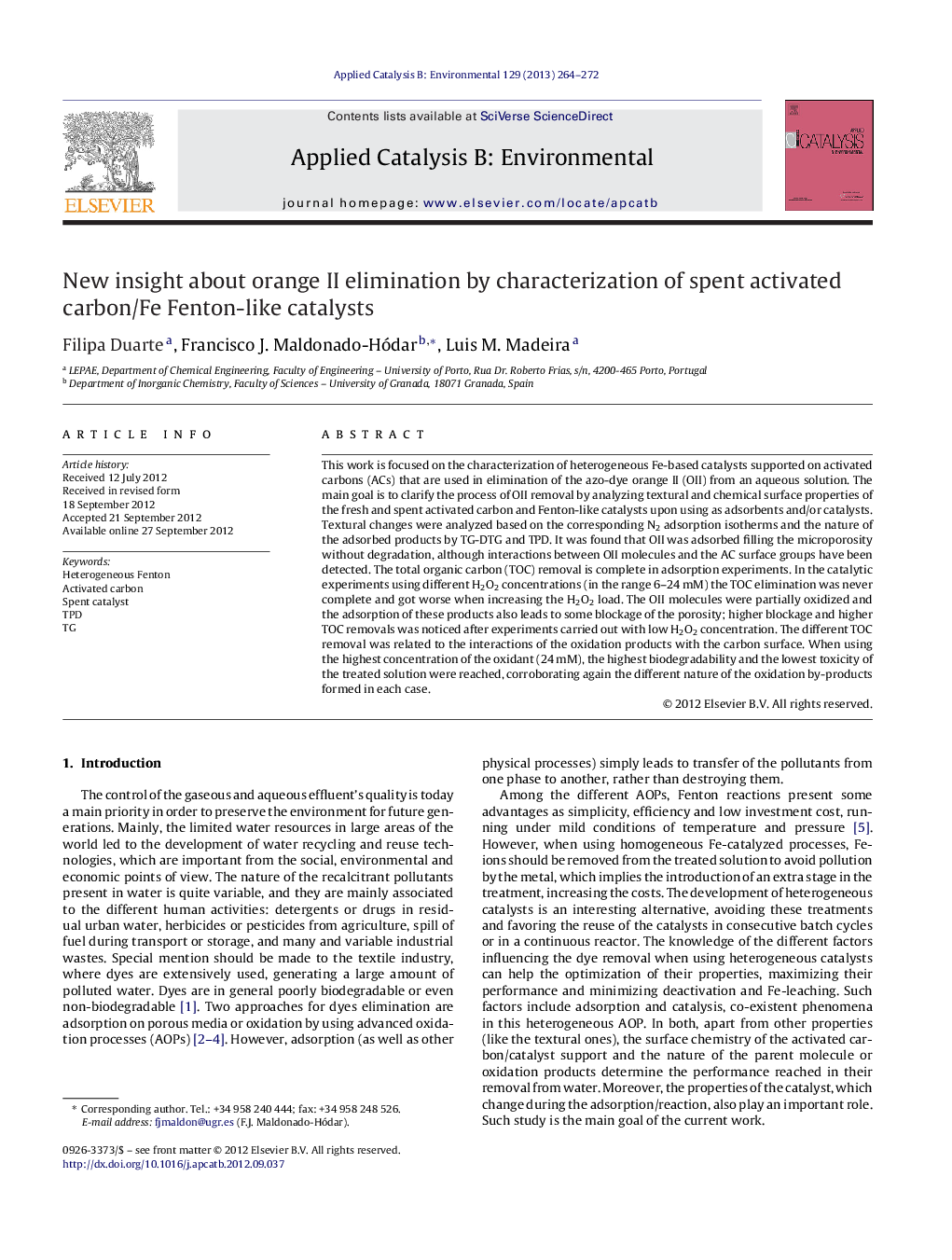| کد مقاله | کد نشریه | سال انتشار | مقاله انگلیسی | نسخه تمام متن |
|---|---|---|---|---|
| 46006 | 46428 | 2013 | 9 صفحه PDF | دانلود رایگان |

This work is focused on the characterization of heterogeneous Fe-based catalysts supported on activated carbons (ACs) that are used in elimination of the azo-dye orange II (OII) from an aqueous solution. The main goal is to clarify the process of OII removal by analyzing textural and chemical surface properties of the fresh and spent activated carbon and Fenton-like catalysts upon using as adsorbents and/or catalysts. Textural changes were analyzed based on the corresponding N2 adsorption isotherms and the nature of the adsorbed products by TG-DTG and TPD. It was found that OII was adsorbed filling the microporosity without degradation, although interactions between OII molecules and the AC surface groups have been detected. The total organic carbon (TOC) removal is complete in adsorption experiments. In the catalytic experiments using different H2O2 concentrations (in the range 6–24 mM) the TOC elimination was never complete and got worse when increasing the H2O2 load. The OII molecules were partially oxidized and the adsorption of these products also leads to some blockage of the porosity; higher blockage and higher TOC removals was noticed after experiments carried out with low H2O2 concentration. The different TOC removal was related to the interactions of the oxidation products with the carbon surface. When using the highest concentration of the oxidant (24 mM), the highest biodegradability and the lowest toxicity of the treated solution were reached, corroborating again the different nature of the oxidation by-products formed in each case.
Figure optionsDownload as PowerPoint slideHighlights
► Orange II molecules are adsorbed on the AC surface without degradation.
► Clear differences between spent AC adsorbent and Fe/AC catalysts were found by TPD.
► The increase of the H2O2 load in catalytic runs did not favor the OII elimination.
► Species formed at high H2O2 load are more oxidized, having difficult to be adsorbed.
Journal: Applied Catalysis B: Environmental - Volume 129, 17 January 2013, Pages 264–272